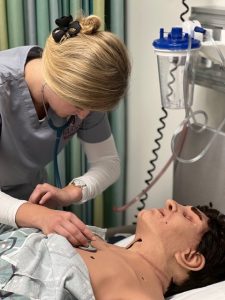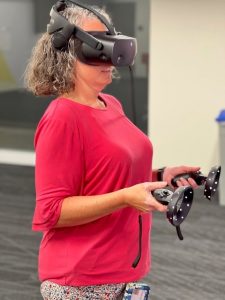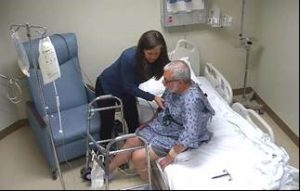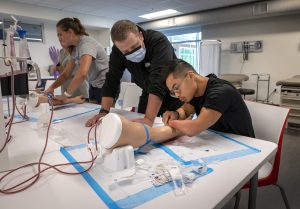- Home
- Academics
- Health Sciences
- Simulation Modalities
Simulation Modalities
Simulation Modalities
The Interprofessional Simulation Center promotes patient safety by incorporating five types of simulation including:

Client-to-Class
Client-to-Class
Participants volunteer to work with the students and share their personal medical journey. These experiences provide students valuable opportunities to communicate and practice clinical skills with real patients and actual diagnoses, fostering a sense of empathy and compassion in our future healthcare providers

Medical Mannequin, Apollo
Medical Mannequins
We have 16 mannequins that vary in age, ethnicity, and fidelity. Task and simulation offerings include birthing, airway management, trauma response, CPR, cardiac care, IV/IO/IM injections, medication administration, gastric sounds, urinary output, and neurologic assessments.

Mixed (XR) Reality
Mixed Reality (XR)
Mixed Reality (AR/VR) allow participants to immerse themselves in a computer generated environment. This is a highly interactive experience offering multidisciplinary simulations.

Standardized Patient (SP)
Standardized Patients (SP)
Trained to portray a specific diagnosis allowing students to practice their patient-centered communication and physical examination skills. SPs also offer feedback from a patient perspective to the students after the encounter.

Task Trainer
Task Trainers
Task Trainers are models of human anatomy utilized to practice specific skills. Offerings include airway management, IV arms, wound care, NG tube placement, trach care, lumbar puncture, cardiac auscultation, pelvic examination, breast trainer, and fetal monitoring.